Concepts Analysis Laboratory Expansion Complete
Ribbon cutting and open house held to dedicate expanded facility
Redstone Arsenal, Ala. - The U.S. Army Space and Missile Defense Command/Army Forces Strategic Command (USASMDC/ARSTRAT) Concepts Analysis Laboratory expansion was officially completed with a ceremonial ribbon cutting and an open house on June 9 to introduce the recently expanded facility to visitors and command employees.
Officiated by Dr. Rodney Robertson, former director of the USASMDC/ARSTRAT Technology Center, the short ceremony recognized the new start for the facility.
"It is important to the Technology Center, the command and to the mission we perform that we bring in bright young people and that we have the right facilities to prepare and train them," stated Robertson.
After just more than five months of construction and endless shifting of workspace for the students and employees, the final result is a facility where a new era of analysis and discovery at USASMDC/ARSTRAT can begin.
The completed expansion of the CAL increased the workspace from approximately 1,200 square feet to more than 2,800 square feet. The number of workstations grew from about 12 to more than 35 with additional space in the classroom for group training and feedback sessions.
Initially formed in 2004 at the direction of then Technology Center Director Jess Granone, the CAL has trained young students and professionals on radar concept programs and the use of missile defense algorithms for breast cancer research.
CAL technical efforts have contributed to various programs, including those in space, cyber, dual-use defense-medical algorithm applications and the force encampment protection system, an all digital radar used in counter rocket, mortar and missile (CRAM) support.
Along with providing technology concept development and analysis support to the Technology Center, the CAL mission is also to support workforce recruitment and development.
The focal point for the recruitment, training, and mentoring of students and young professionals is the Department of Defense Science, Mathematics And Research for Transformation (SMART) program -which pays students full scholarship, stipend, insurance, and more to encourage science and technology studies.
The CAL expansion allowed for a large growth in the number of young professionals and students working there. This summer, there are 28 students working in the CAL from a variety of Defense Department or Army sponsored programs. This includes 10 full-time students, including three new students from SMART scholarship program and two West Point cadets.
Additionally, there are eight student temporary employment program (STEP), or summer hire, students and two students working with the Army in parallel (SWAP) students.
"The CAL is a key piece to the USASMDC/ARSTRAT Technology Center in many ways," stated Debra Wymer, acting director of the Technology Center.
"This is a valuable asset to growing the workforce and recruiting and mentoring bright, young professionals and bringing them into the workplace as students and interns," Wymer continued.
The Technology Center leadership is aware of how competitive the market is for young engineer and science professionals.
"In a highly competitive environment in Huntsville, we are competing for the best and the brightest young minds with industry and university research labs," said Wymer.
Mark Ray started out as a co-op, earned his masters in electrical engineering at Auburn University, and now is a permanent employee at USASMDC/ARSTRAT. Ray is the lead on the SMDC-ONE nanosatellite technology demonstration ground station.
"As a student here you work on actual programs," said Ray. "For instance, when the SMDC-ONE nanosatellite is launched later this summer the students will be operating the radar."
It's the hands-on portion of the job that keeps coming up in conversation with members of the CAL.
"The fact that we are working on something that makes a difference and that the Army is really pushing...we're excited to be a part of this. It is interesting and challenging work," Ray continued.
Students at the CAL during the summer of 2010 come from colleges around the country, including Auburn University, University of Louisville, Georgia Tech, Bennett College, N.C., and the U.S. Military Academy. About eight students from local colleges are scheduled to remain at the CAL during the school year.
USASMDC/ARSTRAT, like all other sections of the federal government, faces an aging and retiring work force. Losing that work force without transferring the skills and knowledge to a younger work force could set back the progress made in space and science technologies. By utilizing SMART, STEP and other government sponsored programs, USASMDC/ARSTRAT uses mentors to work with young engineers to train them while capturing the experience of the seasoned employee.
Kevin Nash is the supervisor at the CAL and has been with the project since it was conceived.
"Our Army mission is to look at new space and missile defense concepts to do modeling, simulation and analysis of radar technology we're developing. [But] another mission [is] to bring in co-ops, students and young engineers and try and give them more of a technical training work site," said Nash.
Nash was a co-op student working for SMDC in 1989 and became a full time employee in 1992 when he graduated from the University of Cincinnati. Now, as he is overseeing a program that was similar to the way he became a government employee, he tries to provide the students challenging tasks rather than busy work. He does all he can to keep students out of meetings, trying to instill a whole different culture at the CAL than he perceives in the rest of the government offices.
"The CAL is the future, the next generation of engineers," said Robertson at the opening ceremony. "The goal is to get bright young engineers involved in hands-on work and keep them working for the government."
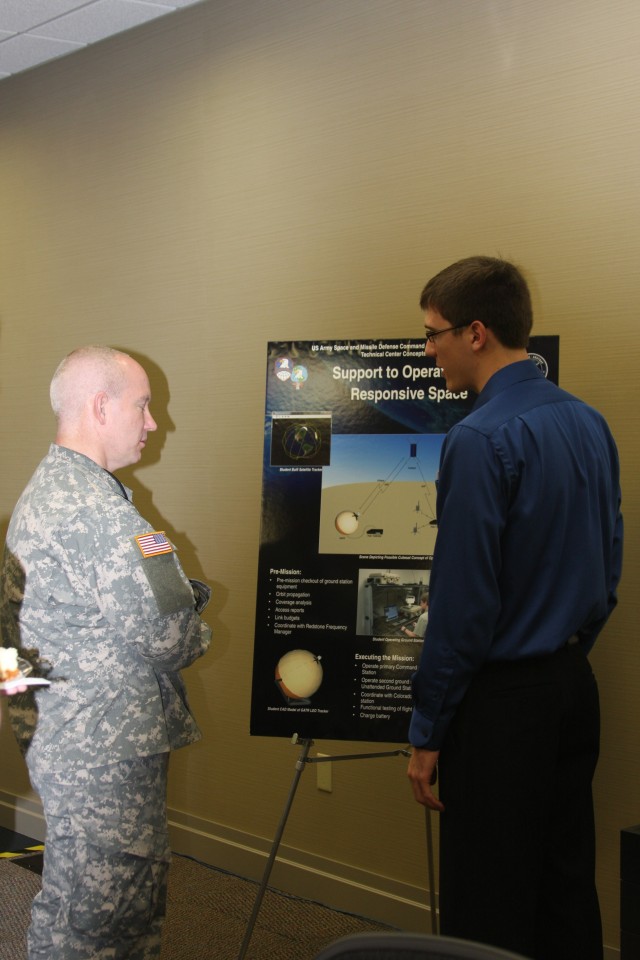
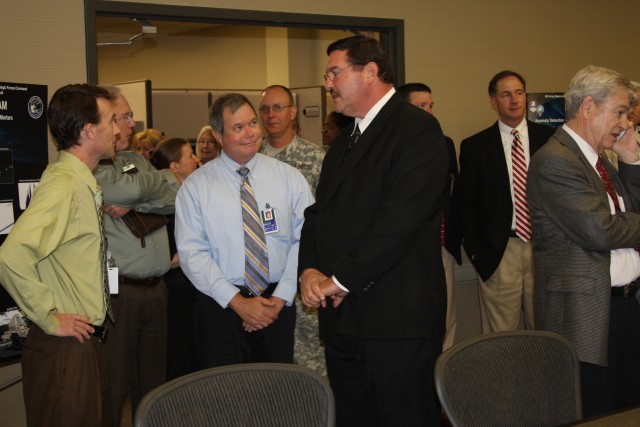
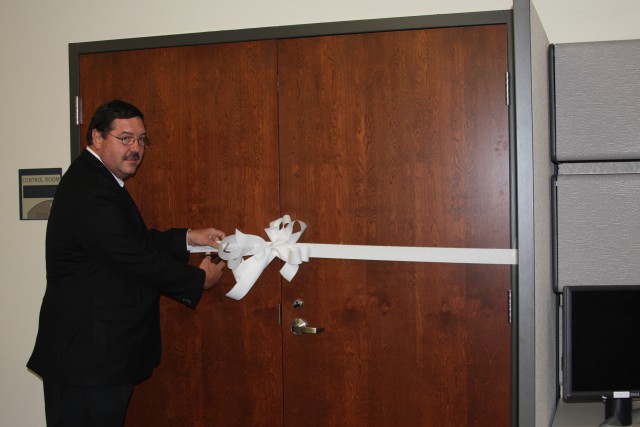
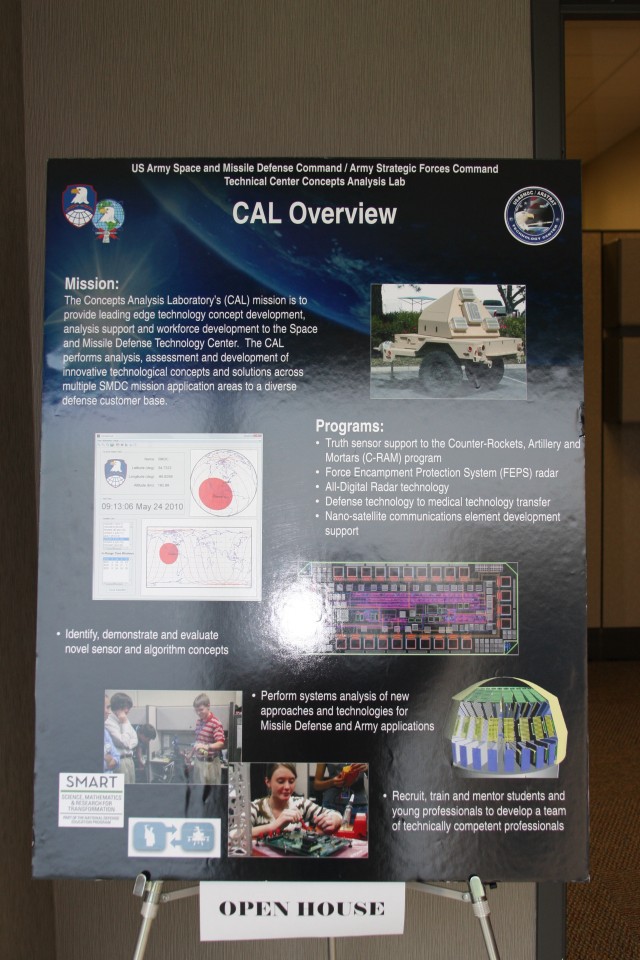
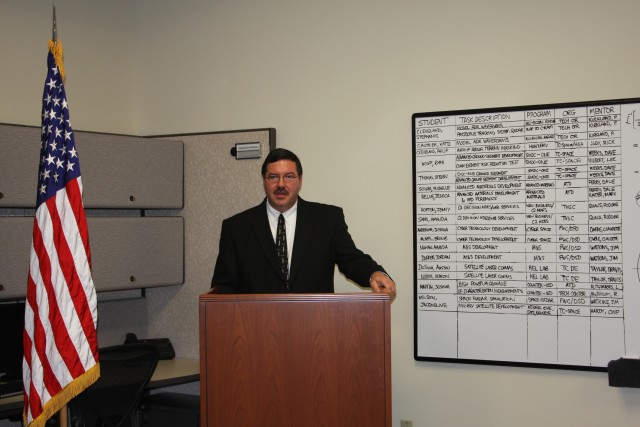
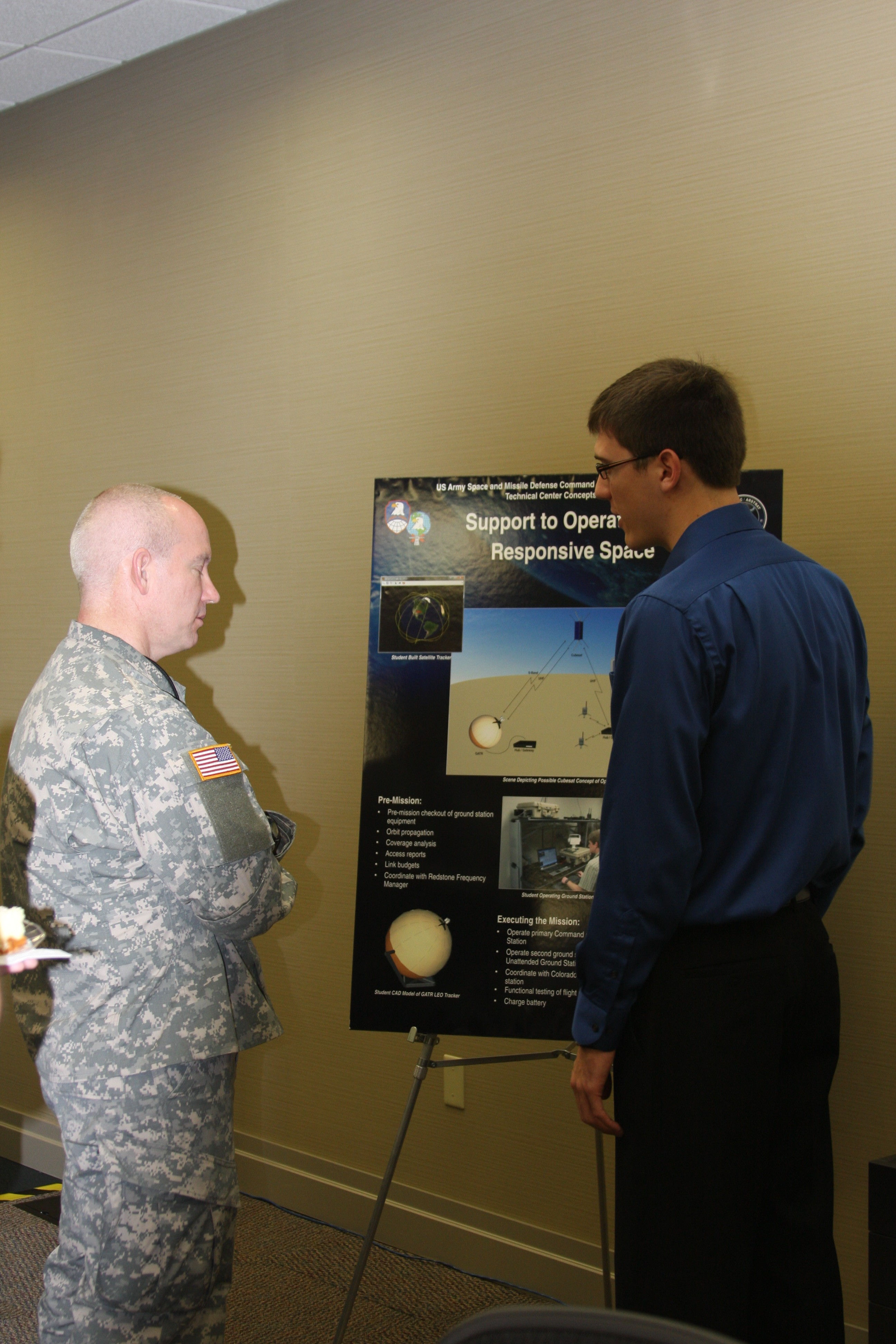
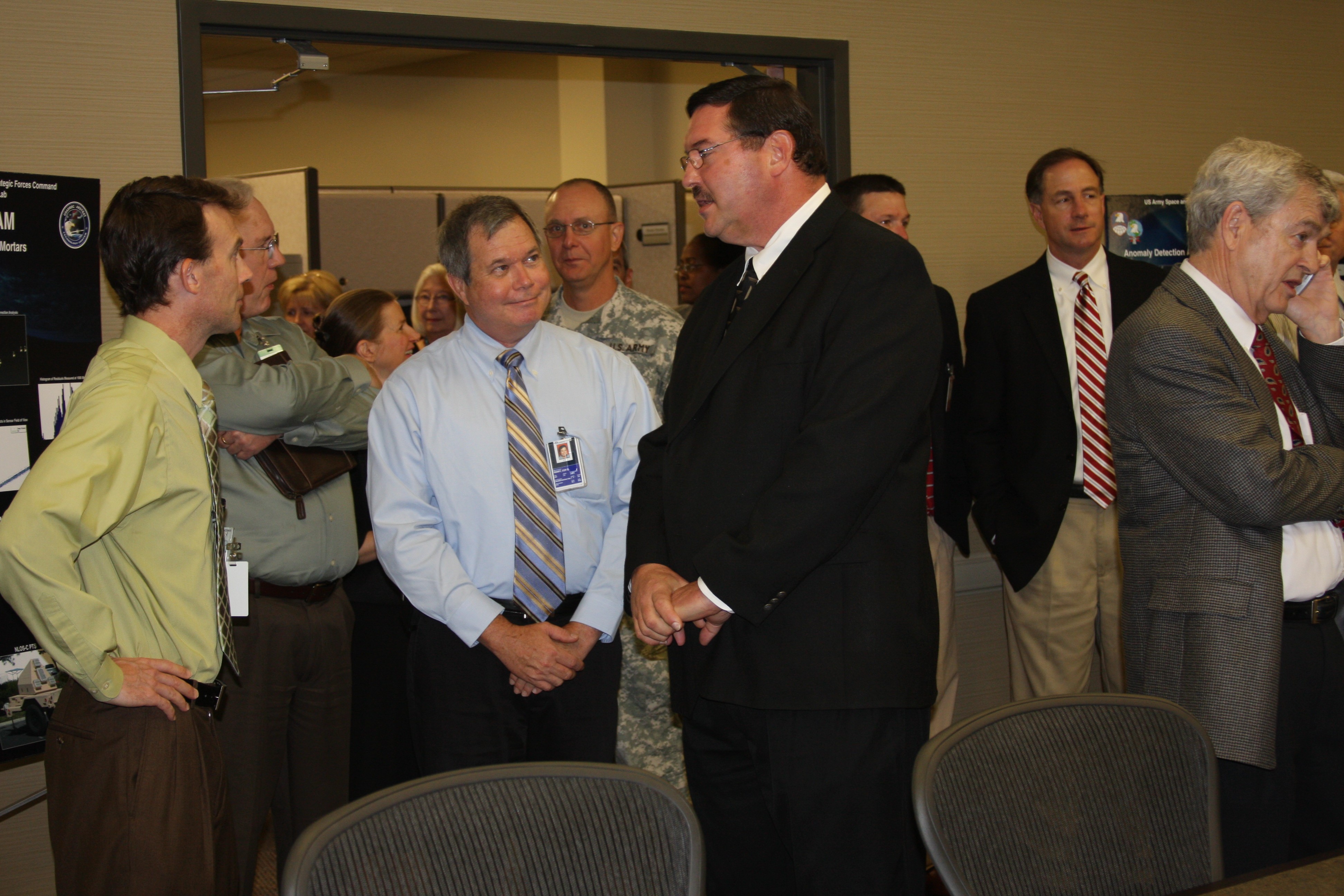
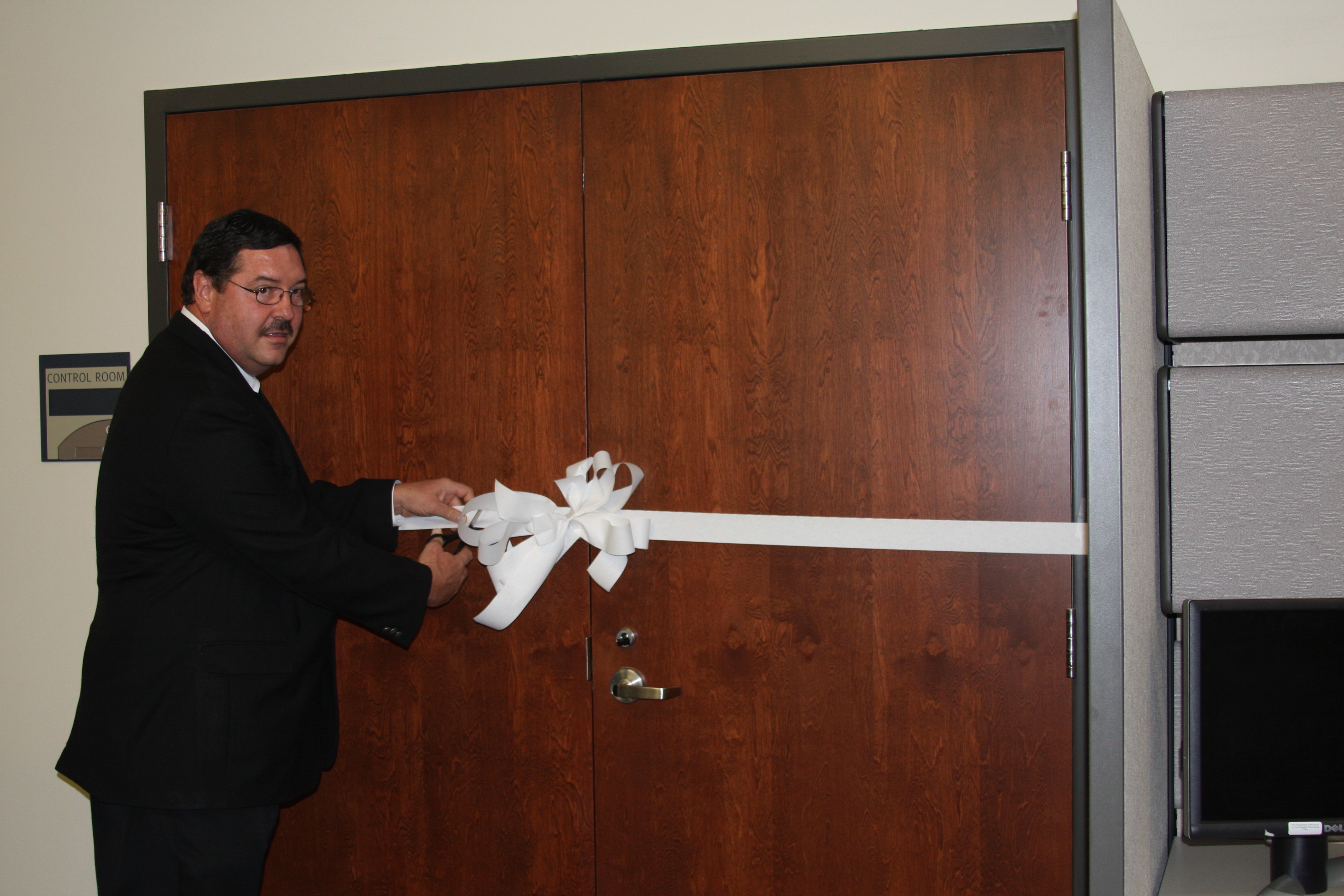
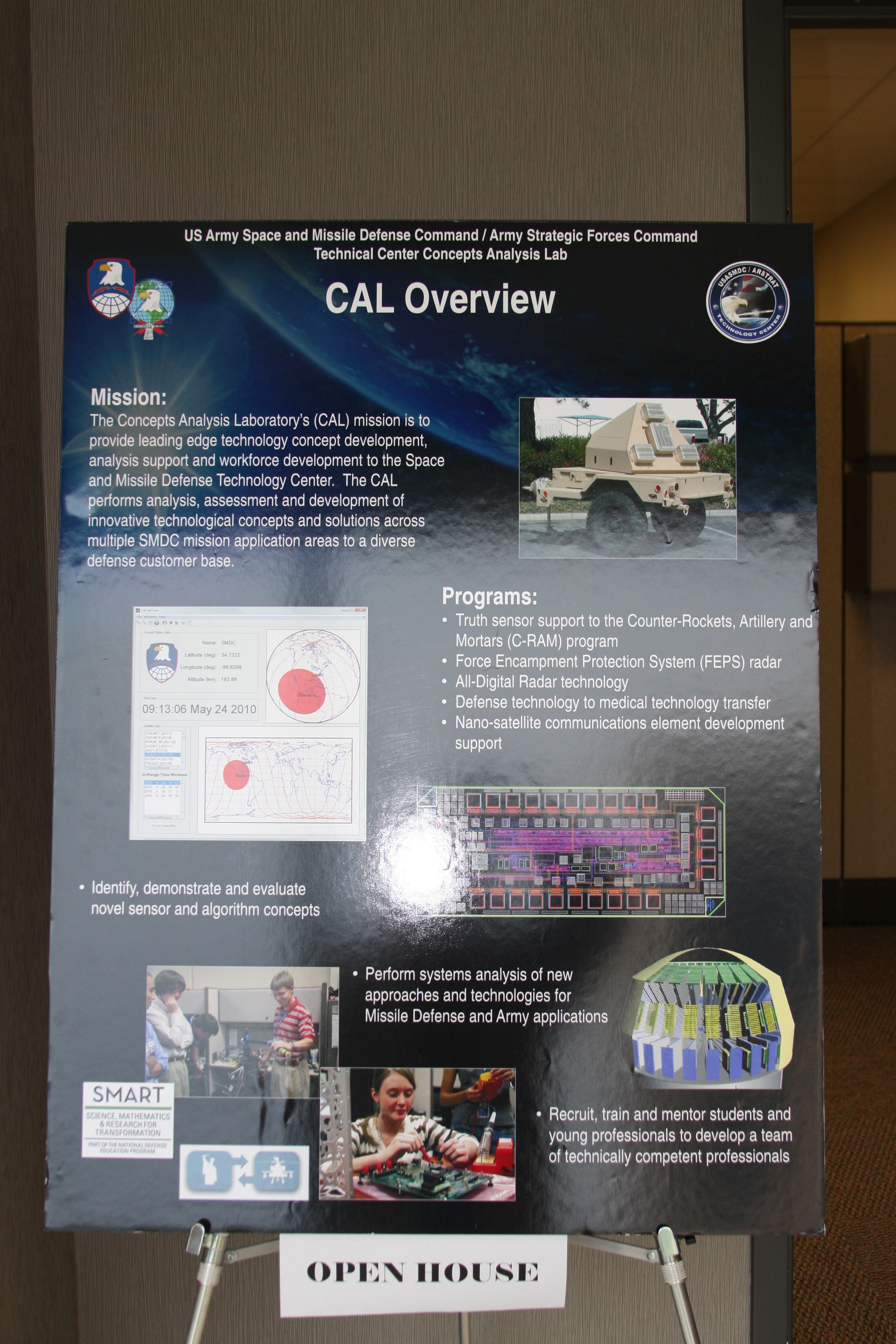
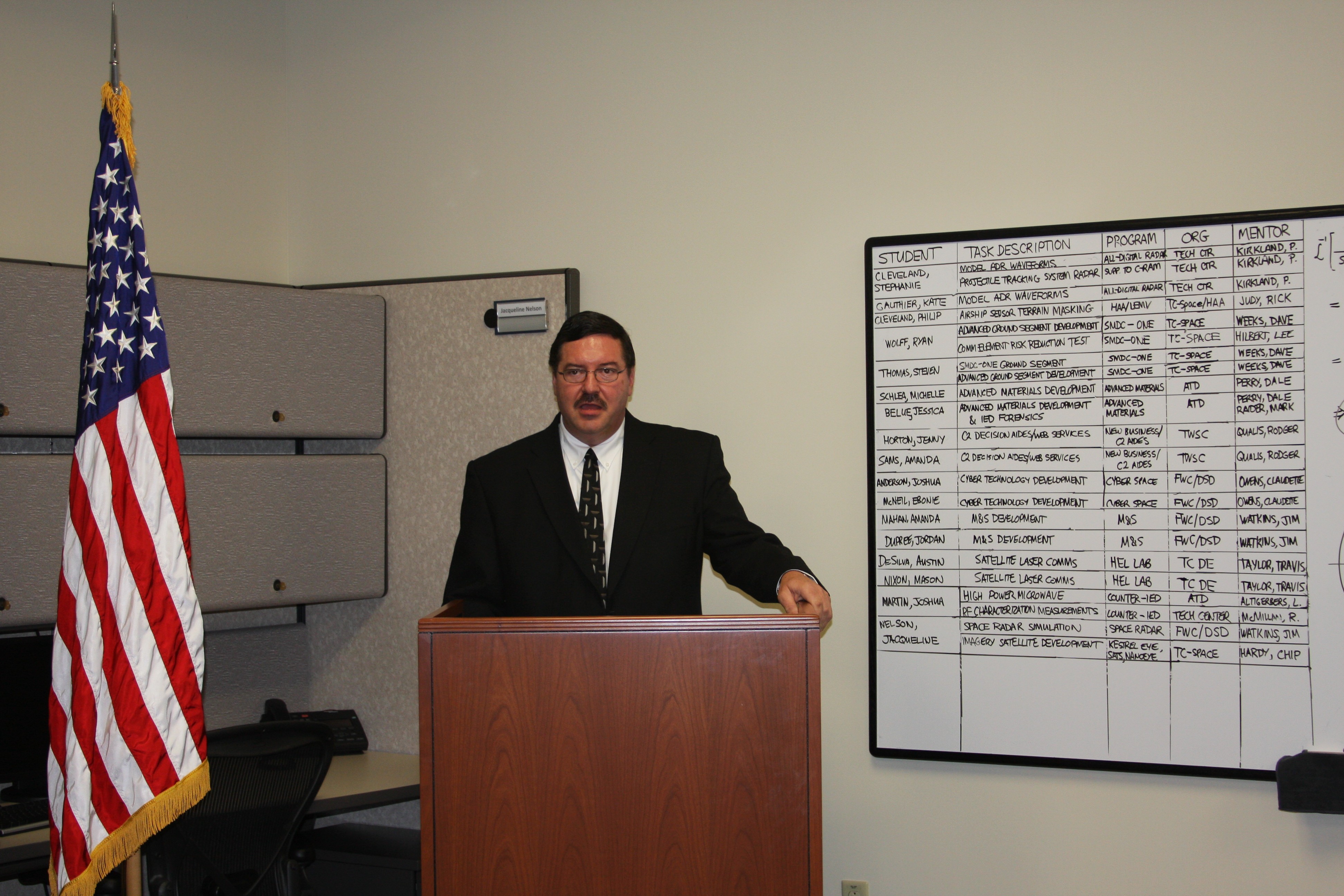
Social Sharing